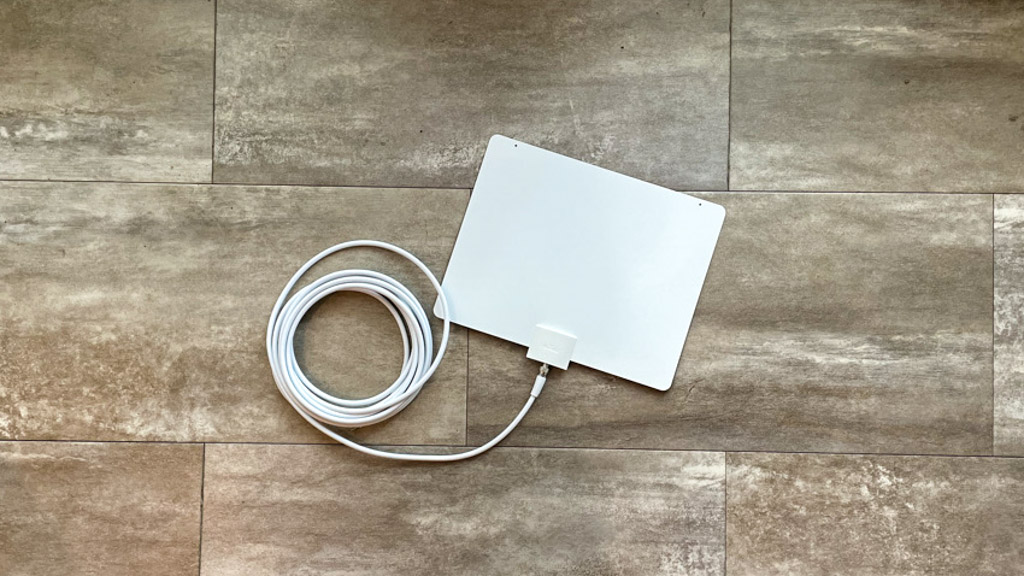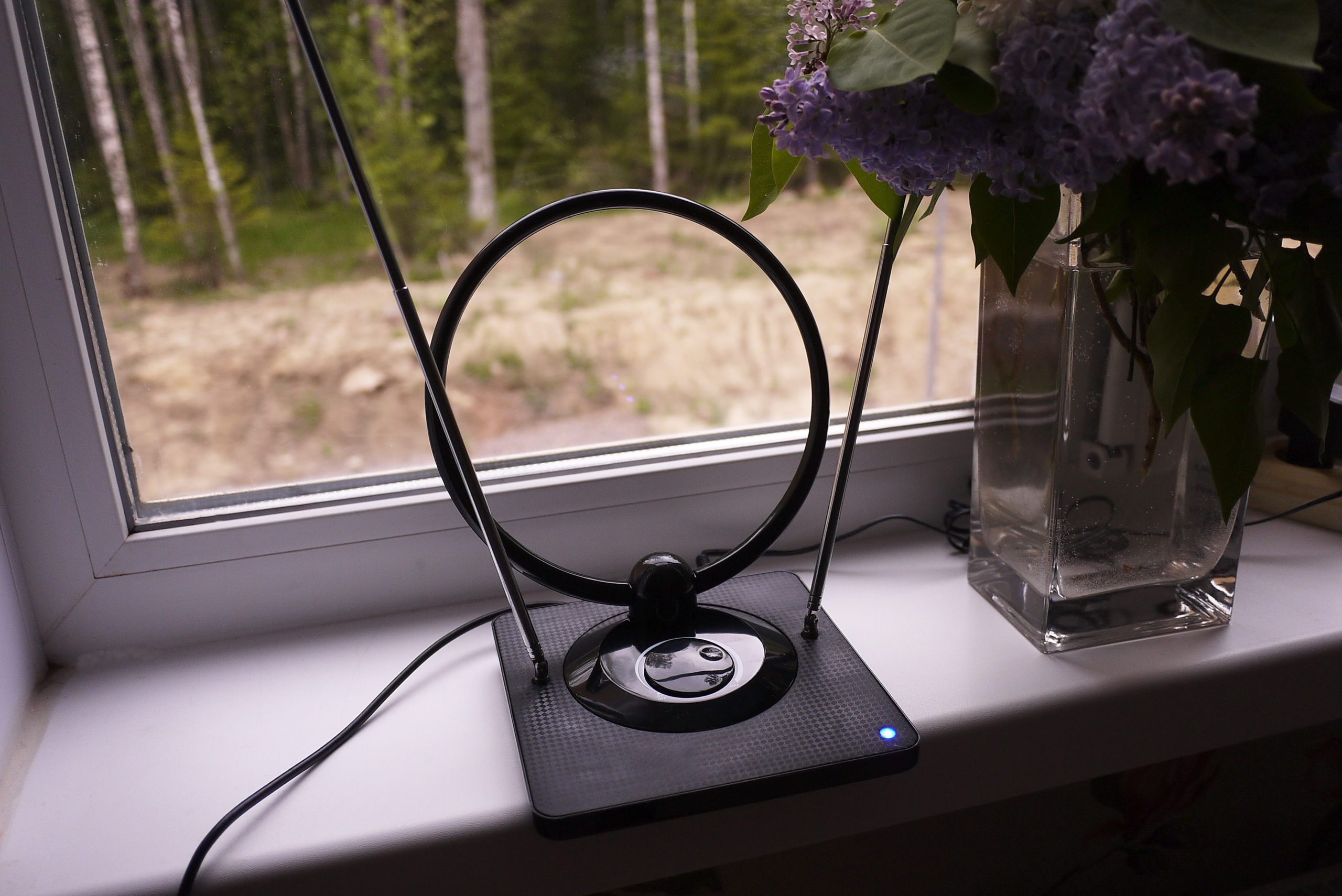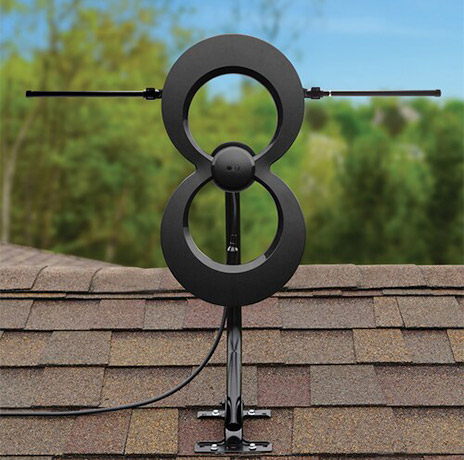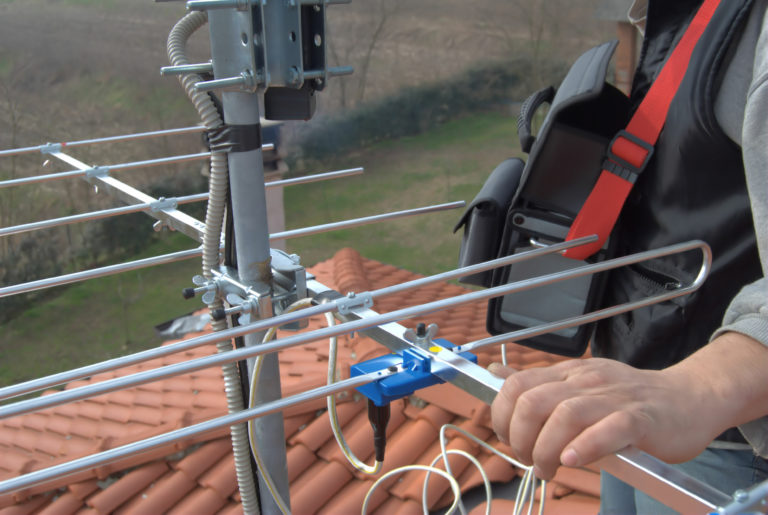While getting the right antenna and hooking it up to your TV are key steps for enjoying free, over-the-air broadcasting, they are still only about half of the battle. Making sure the device is positioned in the right place and aimed in the best antenna direction for the area where you live will make a massive difference in the number of channels you pick up and the strength of their broadcast signals.
Finding the best antenna direction and placement within your house — if you’re using an indoor model — is arguably the most important factor in getting the device’s best performance. We’ve got a handy guide on deciding whether an indoor antenna or outdoor antenna is best for your situation, but regardless of which type you choose, we’re going to run down some tips on aiming yours for its best performance.
“Aiming” A Flat Antenna
Flat antennas — or ones that have no dipoles sticking out of them for you to aim — are some of the most popular ones on the market because they are very affordable, a snap to set up and they look good virtually anywhere. These antennas are omnidirectional, which means they bring in broadcast signals equally from all sides, rather than focusing their power in a single direction.

Since you can’t really aim a flat one in the traditional sense, finding the best antenna direction comes down to placing it in the right spot. If your flat antenna is simply located in a central location in your house, you are sacrificing some of its capability because of the many extra obstacles between it and the open air where the broadcast signals live.
To improve the number of free channels you get with a flat antenna, set it up as close to an outside wall or, better yet, a window, as you can. For maximum results, use an online transmitter locator, like the free ones offered by Antennas Direct or TV Fool, to figure out where the signals in your area are coming from. After that, you can use a compass app to figure out which side of your house is closest to the towers and place your antenna near — or mount it on — a wall or window on that side.
Aiming Rabbit Ears
The classic rabbit-ears antenna is still a great option for many people, especially if they live within 30 miles of the broadcast towers they are hoping to pick up. To get the best performance from your rabbit ears, you’ll want to follow the steps above about locating the towers in your area using an online map — or a free app like Antenna Point — and putting your antenna as close to a window on that side of the house as possible.

This positioning should help you bring in plenty of channels on its own, regardless of how you’ve positioned the actual poles but if you are trying to strengthen the signal of a specific network, there’s an extra step you can take.
For this, you’ll want to put your rabbit ears in a “V” shape before aiming one of them in the direction of the tower or towers you most want to pick up, remembering that they are generally at a higher elevation than your antenna. From here, if your signal is still a little weak, it’s recommended that you start to aim the other “ear” toward the ground, almost making a straight line out of the two poles.
Aiming An Outdoor/Attic Antenna
If you’ve got an antenna installed on the roof or in your attic, aiming it properly may mean the difference in picking up 50 channels in pristine HD versus less than half that total showing up in your TV’s built-in guide. If your outdoor or attic antenna is omnidirectional, then there isn’t a ton you can do to improve the signal strength by aiming it, other than making sure it’s as free from signal-blocking obstacles as possible.
In the attic, a metal roof can be a huge drain on your signals, for instance, while on the roof, your chimney can do the same. If your omnidirectional antenna has VHF-attracting poles sticking out at the sides, like the one shown below, just make sure at least one is pointed toward the direction of the towers in your area.

Meanwhile, if your outdoor or attic antenna is directional, with a metal pole pointing out in one direction, aiming properly is essential. Use the free broadcast signal-finding tools we mentioned above — Antennas Direct, TV Fool or the Antenna Point app — to find the optimal direction to aim your antenna, using a compass to find it.
Keep in mind that things like trees, mountains and buildings between your antenna’s location and its target will have an effect on the signals it’s able to harness and try to point away from those if possible.




